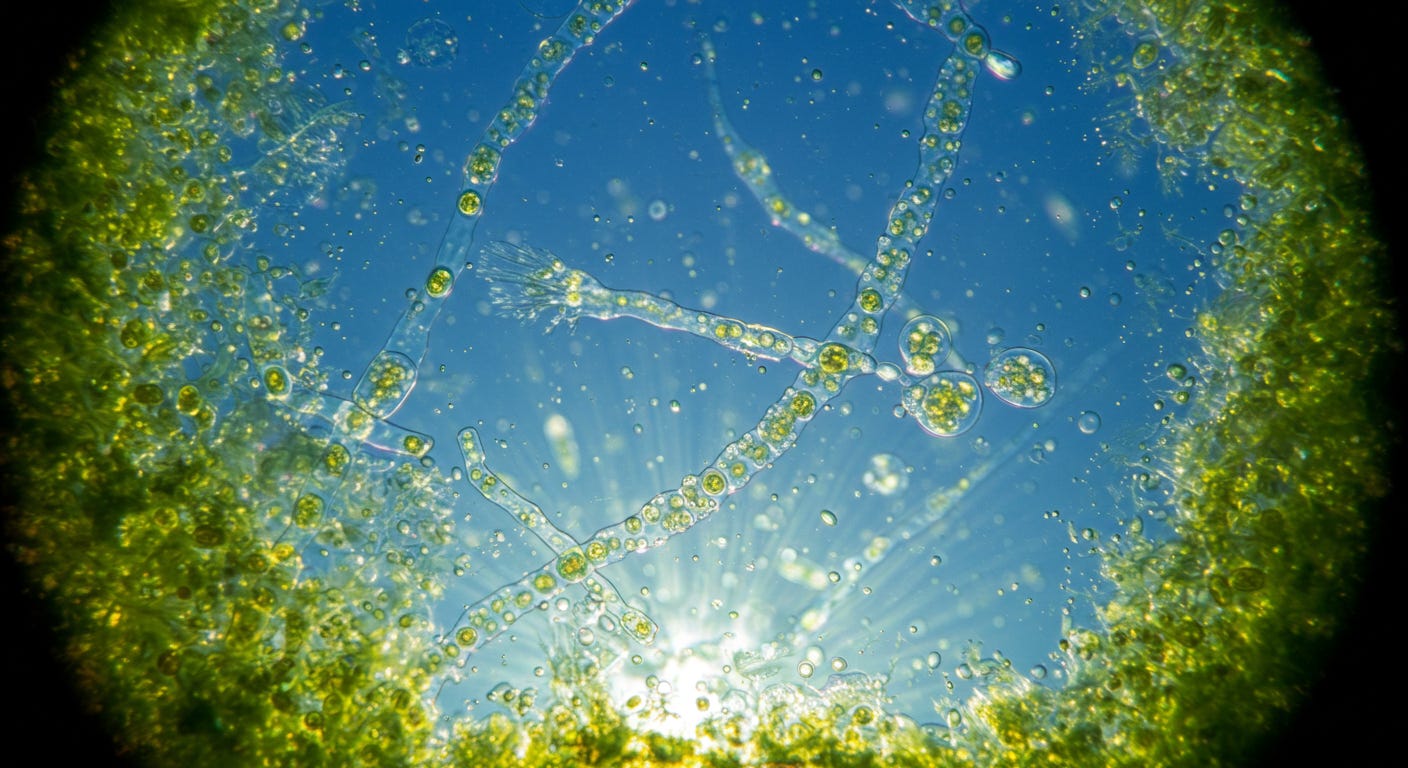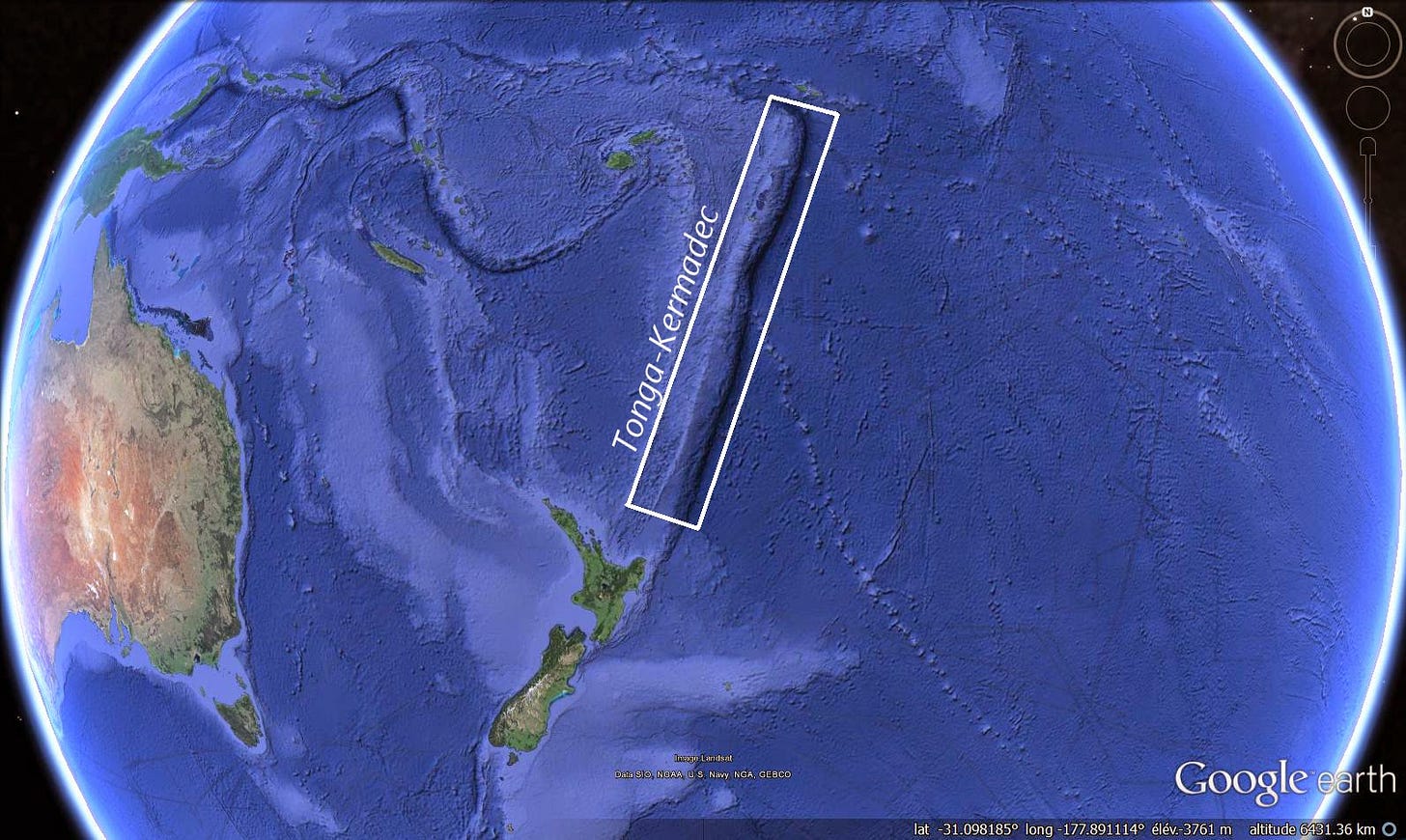The ocean fertilization experiment nobody can control
Tonga Kermadec doesn't care what you think about what he's doing.

Someone is fertilizing the ocean. With zero oversight. As we speak, they’re pumping tons of iron and phosphate fertilizer into the ocean without bothering to get a permit from anyone. The experiment is triggering a vast plankton bloom, pulling tons of carbon dioxide from the air and creating a huge fishing boom.
This is not a drill — we’re talking large-scale climate intervention that’s not a proposal or a concept note or a powerpoint: it’s a reality, right now.
The culprit? His name is Tonga Kermadec.
You may not have heard of him, but underestimating him would be foolish. He has access to unlimited energy and an unending supply of minerals. He couldn’t care less what you think about what he’s doing.
And nothing you can do will stop him.
The results of Tonga Kermadec’s rogue ocean fertilization experiment have been astonishing: nitrogen-fixing plankton, normally limited by a lack of iron, have exploded in number. The nitrogen they turn into bioavailable nitrate has fertilized a patch of ocean the size of Germany, turning a vast swathe of ocean green with chlorophyll. Across the region, biological productivity has gone into overdrive, drawing carbon out of the atmosphere at rates never before achieved by any ocean fertilization experiment.
It’s all true.
The twist, of course, is that Tonga Kermadec isn’t a person.
It’s a string of shallow undersea volcanoes stretching across the South Pacific.
Nature keeps giving us these hints about how to fertilize oceans safely and effectively.
Few of those hints are louder than Tonga Kermadec.
In this remarkable 2023 paper, Sophie Bonnet and her colleagues reveal the whole mechanism in detail: from vent to iron plume, to plankton bloom, to deep-sea carbon trap. Lab experiments confirm it. Satellite data corroborate it. The carbon sequestration efficiency—measured in grams of carbon stored per atom of iron—is higher than anything we've achieved with human-run iron fertilization trials.
They started with sonar. Using acoustic imaging, Bonnet’s team detected fluid and gas plumes rising from the summit of one large submarine volcano—known, unofficially, as "Volcano 1"—up to just 10 meters below the ocean surface. Water samples taken above this site revealed that concentrations of dissolved iron were 10 to 80 times higher than normal.
These iron-rich waters weren’t static. They were being stirred. The team measured turbulence above the vents and calculated vertical mixing rates, showing that iron and phosphate were diffusing upward into the photic zone—where plankton, energized by sunlight, could put them to use. Nitrate, curiously, was not diffusing with them, which helps explain the next step in the story.
This iron and phosphate cocktail proved irresistible to a group of microorganisms known as diazotrophs—plankton that fix nitrogen directly from the atmosphere. Normally, these microbes are limited by the availability of iron, which they need in large quantities to run their nitrogen-fixing enzyme, nitrogenase. Right above the volcano, the diazotrophs bloomed. The researchers measured nitrogen fixation rates two to eight times higher than in surrounding waters. One key genus, Trichodesmium, was up to 90 times more abundant than normal.
And the bloom wasn’t just a fleeting surface phenomenon. Bonnet’s team deployed sediment traps to measure how much carbon was sinking out of the surface ocean. They found that particulate organic carbon export was two to three times higher above the volcano than at a reference site far away. Isotopic analysis confirmed the source: most of the exported nitrogen came from the diazotrophs, not from background nitrate. In short, volcanic iron had fueled new biological productivity, and much of it was on its way to the deep ocean.
Still not satisfied, the researchers took some of that iron-rich volcanic water into the lab. They added it in measured doses to large tanks of surface seawater. As the concentration of volcanic fluid increased, so did nitrogen fixation and Trichodesmium abundance—up to eightfold. The effect was causal, consistent, and reversible.
And it’s not a one-time event. Satellite images show that this region of the Pacific turns green with chlorophyll for about six months each year. The bloom stretches over 360,000 square kilometers. That’s not a local puff of life—it’s a biological regime shift, returning every year, fed by iron and phosphorus leaking from underwater volcanoes.
The carbon sequestration efficiency of this natural iron fertilization—how much CO₂ gets locked away in the deep ocean per atom of iron—is considerably higher than what’s been achieved in any of our artificial fertilization trials. Tonga Kermadec is better at climate repair than we are.
If a scientist proposed a project like this —say, seeding the South Pacific with trace metals to boost carbon uptake— everyone would hear about it. Headlines. Protests. Demands for oversight. But when a volcano does it? We call it interesting. Natural. Harmless.
Tonga Kermadec has no concept of an Environmental Impact Assessment. And yet, it’s doing more to combat climate change than a thousand paper-pushing human NGOs.



Environmentalists only like "natural" things when they don't work. Anything from nature that becomes useful to humans must be denounced.
Hi Quico, wonderful, thank you. Question, did the people also check cloud forming over the area? Additional DMS should do that.